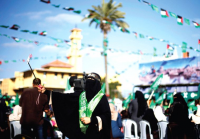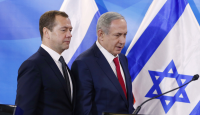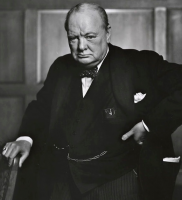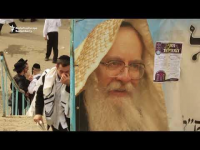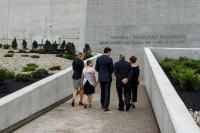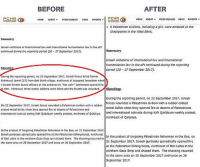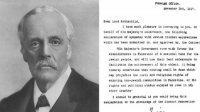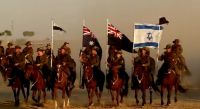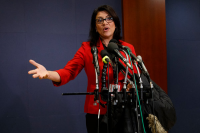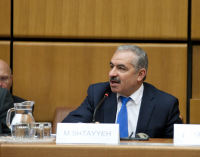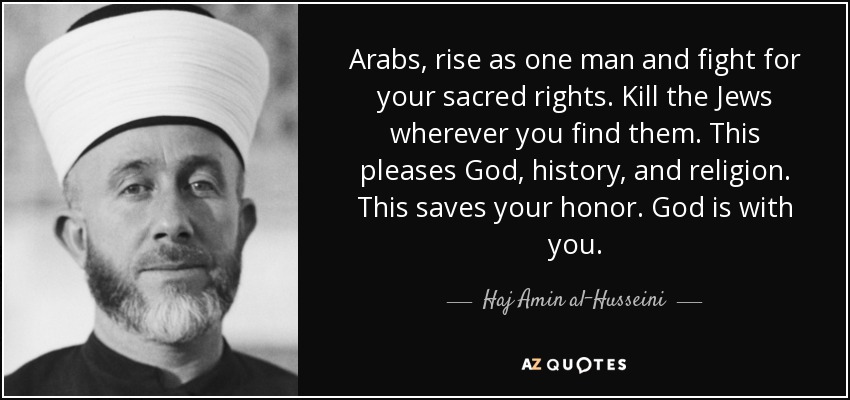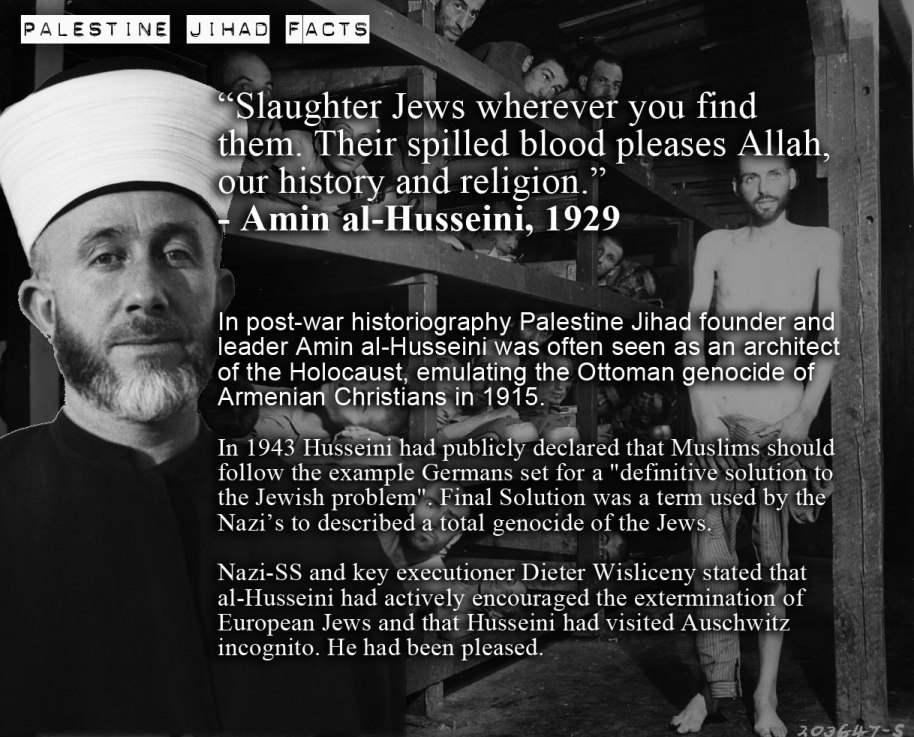
Links
Sheba Medical Centre
Melanie Phillips
Shariah Finance Watch
Australian Islamist Monitor - MultiFaith
West Australian Friends of Israel
Why Israel is at war
Lozowick Blog
NeoZionoid The NeoZionoiZeoN blog
Blank pages of the age
Silent Runnings
Jewish Issues watchdog
Discover more about Israel advocacy
Zionists the creation of Israel
Dissecting the Left
Paula says
Perspectives on Israel - Zionists
Zionism & Israel Information Center
Zionism educational seminars
Christian dhimmitude
Forum on Mideast
Israel Blog - documents terror war against Israelis
Zionism on the web
RECOMMENDED: newsback News discussion community
RSS Feed software from CarP
International law, Arab-Israeli conflict
Think-Israel
The Big Lies
Shmloozing with terrorists
IDF ON YOUTUBE
Israel's contributions to the world
MEMRI
Mark Durie Blog
The latest good news from Israel...new inventions, cures, advances.
support defenders of Israel
The Gaza War 2014
The 2014 Gaza Conflict Factual and Legal Aspects
To get maximum benefit from the ICJS website Register now. Select the topics which interest you.
When did Haj Amin Al-Husseini ??’ Palestine jihad founder, Nazi collaborator ??’ meet the Nazis?
How interesting that the media want to be in such fierce opposition against Netanyahu’s claims.They are up in arms about the claims that the Nazi genocide originates with the Palestinian jihad founder, Amin al-Husseini.
The thought for them that the Muslim jihad occupation that is taking place not only in Israel, but in Burma, in Thailand, in India, in China, in Chechnya, and on and on – built on identical victimhood arguments – can actually have its origin in Islam and be continuous for 1,400 years, would simply be too scary to them and dissolve all their arguments.
______________________
“The Mufti [Amin al-Husseini] was one of the initiators of the systematic extermination of European Jewry and had been a collaborator and advisor of Eichmann and Himmler in the execution of this plan, . . .He was one of Eichmann’s best friends and had constantly incited him to accelerate the extermination measures. I heard him say that, accompanied by Eichmann, he had visited in-incognito the gas chamber of Auschwitz”
SS Hauptsturmfuehrer Dieter Wisliceny, in a signed official deposition submitted on July 26, 1946, to the Nuremberg tribunal.
______________________
The counter argument by the press against Netanyahu’s public statement is built by some of the selective historians they have interviewed. They claim it would be impossible for Amin al-Husseini to have influenced Hitler’s holocaust because al-Husseini officially met Hitler in late 1941 while Hitler had already been putting his plans into motion.
But none of the historians the media is quoting mentioned that al-Husseini was in contact with the Nazi’s long before his officially recorded visit with Hitler. The points with a star (*) and linked are dates not mentioned in the article below the video:
- * 1914-1917 Husseini’s First Taste of Jihad: Amin Al-Husseini swears allegiance to the Ottoman Empire during the Muslim genocide of 1.5 million Armenian Christians. He is an officer stationed in Smyrna and participates first-hand in the Armenian genocide.
- Belfour declaration, which established the borders of Israel and includes Jordan, is drafted in 1917.
- Fanatical Haj Amin begun to instigate anti-Jewish riots in Palestine as early as 1920.
- When the Mufti appeared before the “Palestine Commission on the Disturbances of August 1929” (the Shaw Commission) in December 1929, he held a copy of the “Protocols of the Elders of Zion” in his hand.
- * Arab Nazi political groups spring up throughout Middle East in 1933. (Nazi Germany and the Arab world, 1933-1944, by Francois R Nicosia)
- When Hitler proclaimed the Nuremberg Race Laws in 1935, not so few Palestinian Arabs sent him telegrams congratulating him.
- * Husseini Meets Hitler’s banker in 1936. Francois Genoud, later known as the Swiss Banker of the Hitler’s Third Reich, travels to Palestine to meet Amin Al-Husseini for the first time. Their relationship will continue well into the 1960’s.
- There is a rare document about a possible visit by Haj Amin Al-Husseini to Yemen in 1936. The document refers to Al-Husseini as “an envoy of Hitler.”
- As early as February 1933, a few weeks after Hitler became Reich Chancellor, the Mufti sent a telegram to Berlin addressed to the German consul-general in Jerusalem saying he looked forward to spreading Nazi ideology in the Middle East and Palestine.
- In July 1937, the Mufti visited the German consul-general to express his support for Nazi Germany once again.
- In November and December 1937, a representative from the Mufti traveled to Berlin to seek German financial and military support.
- * Amin Al-Husseini ends up on Hitler’s payroll. Al-Husseini visits Jerusalem German Consul. He meets SS Hauptschanfuehrer A.Eichman and SS Oberscherfuehrer H. Hagen to discuss “the Jewish question”. Amin Al-Husseini subsequently receives financial and military aid from Nazi Germany.
- Adolf Eichmann, SS Lieutenant-Colonel and one of the major organisers of the Holocaust, knew the Mufti quite well. As early as 1937, he was sent to the Middle East to contact the Mufti and other Arab leaders. He and SS Oberscharführer Herbert Hagen arrived in Haifa by boat on October 2, 1937.
- The Mufti traveled to Berlin in November 1941 to meet Foreign Minister Joachim von Ribbentrop and Hitler.
- The Nazis granted the Mufti asylum in 1941.
- After the war the Mufti’s diary was found by the Allies. On a page bearing the date of 9 November 1944, the following words had been written: “The best of the friends of the Arabs. Eichmann.” Above the word “Eichmann” (written in Latin characters) appeared the following Arabic words in Al-Husseini’s own handwriting: “fairus nadira jiddan” and “Kheir mukhlis lil-arab” – “a very rare diamond” and “the best redeemer for the Arabs.”
No matter what the arguments the media gives in their selection of historians, it is a huge plus that the media is even covering this statement from history as it will lead to a lot of curiosity and attention – finally – to the reality of the Muslim occupation of Israel, which was purely based on jihad and nothing else.
Let’s look at the timeline of some of these incidents below. There is an article by Emerson Vermaat that has painstakingly gone through date by date to cover some of the essentials. Emerson Vermaat is an investigative reporter in the Netherlands specialized in crime and terrorism. We’ve re-published it below the video.
______________________
Adolf Eichmann’s deputy at the Nuremberg trials after World War II, said: “The Mufti was instrumental in the decision to exterminate the Jews of Europe. The importance of his role must not be ignored. The Mufti repeatedly proposed to the authorities, primarily Hitler, Ribbentropp and Himmler, to exterminate the Jews of Europe. He considered it a suitable solution for the Palestinian question.”
______________________
The Grand Mufti was a war criminal in WWII. If you doubt it then look it up.
We’ve added the photos to the original article.
.
.
Haj Amin Al-Husseini – Nazi collaborator and model for today’s Islamists

By Emerson Vermaat
Emerson Vermaat is an investigative reporter in the Netherlands specialized in crime and terrorism.
Haj Amin Al-Husseini (1895-1974), Grand Mufti of Jerusalem, is a man of the past, at the same time he is a man of the present. Not only was he one of the best Arab friends the Nazis ever had, he also worked for them and was handsomely paid by them in the crucial war years between 1941 and 1945 when he lived in a villa in Berlin. Today, he is a model for many radical Muslims who share his views on the Jews, Sharia law and the West. He was the father of Palestinian nationalism. Why did he feel so deeply attracted to Nazi ideology? Why did the Nazis see the Grand Mufti as their close friend and ally?
It was in 1899 that Houston Stewart Chamberlain, a British born germanofile, published his book “Die Grundlagen des neunzehnten Jahrhunderts” (“The Foundations of the nineteenth century”). This book would make a huge impact on nationalistic and anti-Semitic Germans and later laid the foundations for Nazi ideology. Chamberlain acquired German citizenship in 1916, during the First World War, that is. He later joined the Nazi Party, was close to Goebbels and Hitler, but died in 1927, six years before the Nazis would come to power.
Chamberlain was fascinated by the powerful will of the Arabs and Islam (“der Mohammedanismus”), and by the way Muslims are facing death.[1
Nazi Party philosopher Alfred Rosenberg, a strong admirer of Houston Stewart Chamberlain, hated the Christian churches, especially the Roman Catholic Church, but he did admire the creative power of both Confucius and Mohammed. They had a purpose and showed the way forward for others. Mohammed forced many people to follow his doctrine, Confucius created longlasting Chinese “Volkstum” (traditions or customs of the people), Rosenberg wrote in his “Mythus des 20. Jahrhunderts” (“Myth of the Twentieth Century”).[2 At the same time Rosenberg was worried about the increasing number of Muslims (“Mohammedaner”) in Africa and Asia:
“Everywhere in the colonies where racial mixtures occur, the mongrels (“Mischlinge”) enthusiastically embrace Islam. At the same time Islam promises freedom to the negroes by means of a common struggle against Europe. The Indian Basvani writes. “I tell you Europeans to be on guard. An old Indian man says: ‘Be on guard when you see the tears of awakening: Already does the East wake up, the Hindus and the Muslims in India, Egypt, Persia, Algeria and Afghanistan suffer under the domination of aggressive imperialism of the West.”
More than ever must the white races be on guard against the perhaps once united hatred of the colored races and mongrels led by the fanatical spirit of Mohammed. “[3
Yet, Rosenberg’s “Mythus” was translated into Arab – initially in abridged form – and even enjoyed a certain popularity in the Arab world. Bernard Lewis notes that “the Arabs, though classsed as Semites in Nazi literature, were accorded a very different treatment by the rulers of the Nazi state.”
“Despite some initial reluctance and continuing uncertainty, due more to political than ideological considerations, the Nazis decided that the Arabs might be useful to them, and made some effort to win Arab sympathy for Nazi ideas and to mobilize Arab support for German purposes.”[4
The Grand Mufti of Jerusalem, Haj Amin Al-Husseini who was the closest Arab ally the Nazis ever had, pressed Rosenberg in 1943 to instruct the Nazi press to drop the term “anti-Semitism,” because this term had a negative connotation affecting the Arab world which sympathized with the Nazi cause. One year later, Al-Husseini said it is better to replace the term “anti-Semitism” by “anti-Judaism.” Thus, it becomes clear it is about a struggle against the Jews, and not against the Arabs.[5
Rosenberg published a highly critical book on “Zionism” in 1922 and it was this book that later made him an ally of radical Muslims who were also bitterly opposed to Zionism and the “Jewish homeland.” Zionism began in 1895 when Theodor Herzl published his book “Der Judenstaat” (“The Jewish State”). Herzl proposed a national home for the Jews. When he died in 1904, “Zionism” had developed into an inspiring force for many European Jews, especially those who had suffered from persecution or discrimination.
Rosenberg wrote that the Zionists wanted to achieve world domination. They start in Palestine and from there the Jewish “march to world domination” continues. “A Jewish controlled Palestine could develop into a focal point for Jewish ideas of world domination,” Rosenberg said.[6
This is precisely what the Palestinian Hamas movement would say 66 years later in its Charter: Today it is Palestine and tomorrow it will be another country and then other countries, the Zionists will seek to control the whole region and after that they will seek world domination. “The Zionist scheme has no bounds.” (Article 32).
In his “Weltanschauliche Thesen” (“ideological propositions”) written in 1939, Rosenberg points out that National Socialism is not opposed to religion. In fact, it is a new religion, a true German religion which replaces Christianity and the religions of the east – the religions of the past. Yet, Rosenberg simultaneously applauded the renewal (“Neustarkung”) of Shintoism in Japan and of modern Confucianism in China. This stands in clear opposition to the “Christian ideology” of those who are deluding themselves that they can convince others.[7

Rosenberg prefers Islam and the religions of the East to Christianity. But the most superior religion is, in his view, so-called “positive Christianity,” the German “arianized” version of Christianity: Jesus was not a Jew, he was a “hero,” a “self-confident master,” not a servant, and not “the sacrificial lamb of Jewish prophecy, not the crucified one.”[8
This view, by the way, comes close to the Muslim view of Christ. Muslims believe that Christ was an important prophet, but they do not believe he was ever crucified. His Jewish origins are not denied but usually downplayed. And many Muslims, too, attach much value to strength, power and a strong will.

There were a few courageous German theologians who openly opposed Rosenberg’s ideas. One of them was Walter Künneth, a Lutheran theologian who published his “Antwort auf den Mythus” (“Response to the Myth” – a highly critical review of Rosenberg’s “Myth of the Twentieth Century”). Künneth pointed out that Rosenberg’s view of Christianity and the Bible was utterly wrong. He also criticized Rosenberg for portraying the Jew as “the diabolical opponent of the Nordic man.” Those who want to abolish the Jewish Old Testament destroy the very foundations of the church, Künneth wrote in 1935. “Whoever lays a finger on the Old Testament, lays a finger on God’s revelation.”[9
The Nazis did not like Künneth’s book, the secret police (Gestapo) began to harass and interrogate him: “Don’t you know that it impossible in the Third Reich to take such a position on the Jewish question?” a Gestapo man asked Künneth after he had been taken to the notorious Gestapo headquarters in Berlin’s Prinz-Albrecht Street. Künneth was not allowed to preach and teach anymore, his teachings were deemed to be “incompatible with the National Socialist world view.”[10
The Nazis and the Iranian extremists: equating Jews with “Satan”
Rosenberg himself was a religious and ideological fanatic who reminds us of many of today’s Muslim extremists. His “Weltanschauung” (ideology) of the sacred Aryan blood was cloaked in religious language. “The Jewish concept (attitude towards) of the world is satanic,” he wrote. The “German genius” clashes with the “Jewish demon.”[11
Hitler, too, believed that the Jews were “satanic.”[12 The Jewish character is determined by Satan, the Jew is the original image (“Urbild”) of the power of the evil one.[13 Hitler’s Propaganda Minister Joseph Goebbels also equated the Jews with Satan. “The Jew is the Antichrist of world history,” Goebbels wrote in his diary in 1926.[14
The “Antichrist” is an apocalyptic or eschatological figure decribed in the New Testament as “the son of perdition,” “the beast,” “wickedness revealed in human form,” a kind of devil incarnate (second letter of St. Paul to the Thessalonians, 2 verse 3; the first letter of St. John, 2 verse 18, 22; the second letter of St. John verse 7 and the Book of Revelation 13 verses 1-18). In his third letter does St. John, the apostle, refer to the Antichrist as “the arch-deceiver.” And Goebbels calls the Jews “the incarnated lie” (“Der Jude ist die menschgewordene Lüge.”). Therefore, Christ could not have been a Jew (in Goebbels’ view).[15
Today, Iranian extremists do exactly the same. They easily equate the Jews and Israel with Satan. Talking about “Israelites and Jews,” Iranian university professor Hesmatollah Qanbari was interviewed on Iranian TV on November 11, 2004, “global Jerusalem day”:
“Jews infiltrated everywhere, they went covertly and deceitfully… Wherever they went they spread corruption and took over the economy. Anyone who knows the truth surely has no choice but to confront them for the sake of the continuation of humanity and the survival of God’s way. This is a very small group that does nothing but spread strife and corruption. Today, a large portion of Europe is under their control. They collect taxes for no reason. If they grow stronger, their destructive treatment of the Christians will surpass their treatment of the Muslims… The Israeli Zionists didn’t merely occupy land; the matter has become complicated. This is a satanic and impure ideology that may take over the world.” [16
This could have come straight from Hitler’s “Mein Kampf.” (The Nazis, too, emphasized that there was a kind of Jewish conspiracy for world domination by rich Jews who controlled Wall Street and the economies of Europe.[17)
On more than one occasion did the late Iranian leader Ayatollah Khomeini, a bitter and deeply frustrated man, refer to the United States as the “Great Satan,” and to Israel as the “Little Satan.” Iranian leaders follow his example. They may not have been acquainted with Rosenberg’s high flown diction or with Goebbels’ diaries and speeches, but they and yesterday’s Nazis surely have reached a common mind. The Nazis once called the Jews “satanic’ and today’s Iranian leaders now call the Jewish state of Israel “satanic.”
Hitler, the Arabs and the Grand Mufti of Jerusalem
The Palestinian nationalist Mohammed Haj Amin Al-Husseini received his theological education at the prestigious Al-Azhar University, Egypt. (He did not finish his studies, though, so he was not really qualified to act as a spiritual leader.)
Nevertheless, between 1921 and 1948 Haj Amin Al-Husseini was the Grand Mufti of Jerusalem, a fanatical hate cleric who was very close to the Muslim Brotherhood and who deeply resented the Jews, the English and the West in general. Palestine was a British mandate at the time.
Kamil Al-Husseini, Haj Amin’s predecessor and half-brother, was a moderate man who did not hate Jews and Christians at all. The British bestowed om him the title of “Grand Mufti.” He was the very opposite of the fanatical Haj Amin who had begun to instigate anti-Jewish riots in Palestine as early as 1920. Haj Amin had inspired armed gangs to attack Jews praying at the Western Wall in Jerusalem in March 1920. Other Jewish towns were also attacked, the total number of Jews killed was forty-seven.[18
A British military court sentenced Al-Husseini to 15 years in prison, but Sir Herbert Samuel, the British High Commissioner, pardoned him one year later. Kamil had died in 1921 and the British were looking for a successor. Haj Amin’s name was not on top of their list, there was a rival proposed by the Nashashibi clan. But Haj Amin had influential friends who advised Sir Samuel to appoint him.[19 One year later, the British allowed Al-Husseini to become president of the newly formed “Supreme Muslim Council,” an influential body established to direct religious affairs of the Palestine community.[20
From the very moment he was appointed Grand Mufti of Jerusalem, did Haj Amin Al-Husseini abuse his position to preach jihad calling on his followers to kill as many Jews as possible. He was directly or indirectly responsible new riots and the creation of a terrorist group called the “Black Hand.”
Al-Husseini was the driving force behind Arab and Palestinian nationalism, the Palestinian riots in 1929 and the bloody Arab revolt in Palestine which began 1936 and lasted until March 1939. Al-Husseini organized fedayeen (=”one who sacrifices himself”) suicide squads against local authorities.[21
Al-Husseini also issued a fatwa saying: “All Muslims who maintained friendly relations with the Jews were to be considered as infidels.” Most victims of the Mufti and his fanatical violent gangs were moderate Palestinians. There was no peace between the rival Nashashibi clan and the Mufti.
In 1929, Al-Husseini distributed pamphlets saying: “O Arabs, do not forget that the Jew is your worst enemy and has been the enemy of your forefathers.” A Jewish youth group had received permission from the British to conduct a peace March on Waling Wall. The Mufti immediately denounced the “desecration” of the Al-Aqsa Mosque, a holy Muslim site. After an incendiary speech at the Mosque on August 23, 1929, Al-Husseini’s armed fedayeen committed a massacre in the ancient city of Hebron where a Jewish hospital was attacked and a synagogue was destroyed. 67 Jews were killed.[22
Hebron is the second holiest city in Judaism. Armed mobs also descended on the peaceful orthodox Jewish quarters of Jerusalem. There were additional violent assaults on Jews living in Haifa, Jaffa, Safed, Motza and Tel Aviv. By the end of the month 133 Jews had been killed, 399 wounded.[23
When the Mufti appeared before the “Palestine Commission on the Disturbances of August 1929” (the Shaw Commission) in December 1929, he held a copy of the “Protocols of the Elders of Zion” in his hand.[24 (A notorious anti-Semitic document which will be discussed later.)
The riots and the revolt were also aimed at growing Jewish immigration and “Zionism.” In the crucial year of 1936, Al-Husseini became president of the newly formed “Arab Higher Committee,” a committee in which the Nazis (through the German ambassador in Baghdad) also took interest.
As early as February 1933, that is a few weeks after Hitler became Reich Chancellor, the Mufti sent a telegram to Berlin addressed to the German consul-general in Jerusalem saying he looked forward to spreading Nazi ideology in the Middle East and Palestine.[25
The first congratulary telegrams to Hitler upon his election as Reichs Chancellor came from Arabs.[26
In Berlin, the Nazis were quite surprised. They had never expected this. Hitler was not yet interested in courting the Arabs whom he and other Nazis regarded as “inferior Semites.” [27
Besides, Hitler had other priorities at the time. Palestine was a British mandate, and Hitler did not want to provoke the British by meddling into Palestian affairs.[28
In the first six years of Nazi rule a number of high ranking Nazis still believed that German Jews could emigrate to Palestine or another place. This was bound to change after the war broke out.
In July 1937, the Mufti visited the German consul-general to express his support for Nazi Germany once again. In November and December 1937, a representative from the Mufti traveled to Berlin to seek German financial and military support. Admiral Wilhelm Canaris, chief of the German Abwehr (military intelligence), ordered the dispatch of weapons to Palestine.[29
This was a covert operation, of course.

Nazi propaganda in Palestine, Syria and Lebanon was increasinly successful:
“When the Prophet Muhammad’s birthday was celebrated in 1937, German and Italian flags and photographs of Hitler and Mussolini were carried prominently by Arab demonstrators in Palestine, while Arab newspapers hailed this demonstration as a ‘significant gesture of sympathy and respect… with the Nazis and Fascists in their trials at the hands of Jewish intrigues of international financial pressure.’”[30
When Hitler proclaimed the Nuremberg Race Laws in 1935, not so few Palestinian Arabs sent him telegrams congratulating him.[31
After a serious shooting incident in Nazareth in September 1937, the mandatory government abolished the Arab Higher Committee. Al-Hussein managed to escape to the village of Al-Zug, near the Lebanese capital of Beirut (The Arab Higher Commitee was reconstituted in Damascus, Syria.)
In October 1939, the Mufti fled to the Iraqi capital of Baghdad where his status was equal to that of a government minister.[32
Once safely in Iraq, Al-Husseini continued to plot against the British, and not just against them. The already German friendly Iraqi government was overthrown by a military coup on April 1, 1941, and the even more pro-German Rashid Ali El-Kailani became prime minister. The coup plotters had received German, Italian and Japanese support. Al-Husseini played a decisive role in the coup d’état.[33
In exchange for information and cooperation, he received vast amounts of money from the Axis powers (via the Italian embassy in Baghdad).[34
Yunis es-Sebawi became Minister of Economic Affairs. Es-Sebawi also happened to be the same one who had previously translated Hitler’s “Mein Kampf” in Arab.[35
Hitler issued a directive in May 1941, expressing his support for the new Iraqi leaders:
“The Arab Freedom Movement is, in the Middle East, our natural ally against England. In this connection, the raising of rebellion in Iraq is of special importance.”[36
British Prime Minister Churchill sensed the danger and wanted to take quick action. Churchill rightly feared that a pro-Nazi regime in Baghdad could soon spread its nefarious influence to other Arab nations. The Germans were also advancing in North Africa and the Balkans. A British Indian brigade landed in Basra on April 18, 1941. Early May, British planes began to bomb Iraqi positions, Al-Husseini and the local clergy declared a jihad in a special radio message to the people (May 9, 1941).[37
The British military intervention force left Basra and marched north to Baghdad entering the capital on May 31, 1941. Rachid Ali El-Kailani, Al-Husseini and the German and Italian ambassadors fled to Tehran, Persia (Iran). There was an anti-Jewish pogrom in Baghdad the day after the two leaders had left: 179 Jews were killed.
The Nazis were unable to really help their allies in Baghdad because they badly needed troops elsewhere.[38 (Al-Husseini and El-Kailani could not stay very long in Tehran, British and Russian forces invaded and occupied Iran in August-September 1941; both were later smuggled out of the country.)
The British military intervention in Iraq had not been very easy. Churchill later wrote that “the German plan for raising rebellion in Iraq and mastering cheaply this wide area was frustrated on a small margin…. We in Britain, although pressed to the extreme, managed with scanty forces to save ourselves from far-reaching or lasting injury.”[39
The British government knew well before May 1941 “that the political situation in Iraq was deteriorating in the wake of Germany’s successes in Europe and as a result of increasing Axis pro-nationalist propaganda.”
Since September 1940, British intelligence (Code and Cypher School and SIS) had been reading “Axis diplomatic telegrams that the Italian and Japanese governments and the Grand Mufti of Jerusalem were involved in anti-British machinations in Iraq and the supply of arms to the nationalists in that country.” The Italian legation was an important center of intrigue, the SIS reported. These stern and repeated warnings were largely ignored, however.[40
A nation can only ignore good intelligence at its own peril.
It is interesting to note that the Mufti was plotting against the very Iraqi government that granted him asylum in 1939, indeed, a government that helped him in many ways. The Mufti, obviously, wanted a government that would directly confront the British. He realized that the British military position was weak at the time. (The British intervention force which landed in Basra and marched on Baghdad was rather small and the Mufti never expected the British intervention to succeed.)
The Mufti and Kailani would later become bitter rivals as both presented themselves as Pan Arab leaders and both were dependent on Nazi and Italian support. The Mufti did everything in his power to sideline Kailani, the very man who supported him in the short time he was Prime Minister of Iraq.
It was not the first time the Mufti was plotting against those who helped him. When British High Commissioner Sir Herbert Samuel made the fatal mistakes of both pardoning Haj Amin Al-Husseini and appointing him Grand Mufti of Jerusalem, the newly appointed spiritual leader immediately began to agitate against the British. Later, during his stay in Berlin after the Nazis granted him asylum in 1941, the Mufti would be involved in numerous intrigues against those he did not like. (The Mufti even forced the German Foreign Minister to sideline an important Foreign Office official who was too close to his rival Kailani.[41)
During his stay in Baghdad the Mufti was very anxious to deepen his relations with Nazi Germany. In 1940, he wrote two obsequious letters to Franz von Papen, the German ambassador in Turkey. And in January 1941, he wrote a letter to Hitler himself stressing the common struggle against the Jews and “the very warm sympathy of the Arab peoples for Germany and the Axis countries.”
“The Arab peoples everywhere are prepared to act against the common enemy and give enthousiastic support to the Axis countries with a view to contributing to the defeat of the English-Jewish coalition.”[42
After he had been forced to flee from Baghdad, the Mufti wanted to meet Hitler and Mussolini personally. But initially, Hitler was not very charmed by the idea to form alliances with Muslims most of whom were “semites.” On August 22 1939, nine days before the outbreak of the War, Hitler indicated that he did not have a high regard for the people of the Far East and “Arabia” (the Arabs). He even called them ‘”lacquered half-monkeys.”
“We will continue to stir up unrest in the Far East and Arabia. Let us think of ourselves as masters (‘Herren’) and consider these people as best as lacquered half-monkeys who need to feel the knout.”[43
But it was during the war that Hitler began to show more respect for the peoples and religions of the East (Islam, Confucianism, Buddhism). “While the Germans were lured into superficial theological discussions, the teachings of Confucius, Buddha and Mohammed offered a broad spiritual base for religious minded people,” he said in June 1942.[44
By that time Haj Amin Al-Husseini, had become his ally. Hitler was favorably impressed by Al-Husseini’s “blond hair and blue eyes,” and believed “that in more than one case the Mufti’s ancestors must have been Aryan, he probably had the best Roman blood streaming through his veins.[45
This had also been noted in December 1937 by a writer in Rosenberg’s Nazi newspaper “Völkische Beobachter.” The Arabs are not pure semites, this Nazi says. Look, for example, at “the Mufti of Jerusalem, whose red beard and blue eyes reveal the dominant Circassian strain of this mother.”[46
During the war Al-Husseini spent most of his time in Berlin where he had his own office, a huge villa. The Nazis gave him a monthly stipend of 62,500 Reichsmark (about 20,000 US dollars), paid by Ribbentrop’s Foreign Office. The Mufti was anxious to receive as much money as possible from a variety of sources in the Third Reich, also from the SS, and preferably in foreign currencies. Substantial amounts of money were transferred to Switzerland. Even in April 1945, when the Red Army was closing in on Hitler’s Reich Chancellery, did the Foreign Office pay him 50,000 Reichmark.[47
Part of this Nazi money was later used to raise the “Arab Liberation Army” which would terrorize moderate Palestinians and Jews in 1948.[48
During the war most Arab leaders did not conceal their preference for Nazi Germany, and the Nazis were well aware of this. A large party of the Arab owner classes hoped that Germany would win the war.[49
One of the Arab leaders who was rather pro-German and pro-Mufti was King Farouk of Egypt. In May 1941, the British intercepted a secret personal letter from the king addressed to Hitler saying that “he (King Farouk) was filled with strong admiration for the Führer and respect for the German people, whose victory over England he desired most sincerely.”[50
After the war many leading Nazis, SS war criminals as well as the Mufti himself found refuge in Egypt or Syria (Alois Brunner, for example, fled to Syria.) The Islamists from the influential Muslim Brotherhood which originated in Egypt were also pro-Nazi. The Mufti himself was a member of the Muslim Brotherhood and became its official representative in Palestine after the war. Theologically he was close to the Saudi Wahhabi tradition, the main brand of Sunni Islamism today. During the Palestinian revolt of 1936-1939, Sharia law was introduced in those areas of Palestine controlled and terrorized by Mufti militias. The Mufti’s legacy included mass killings of his (Palestinian) opponents.[51
After his escape from Iran with the help of the Italians, the Mufti traveled to Rome to meet Mussolini. He wanted the Axis powers to issue an official declaration that they supported the Arab aspirations for independence and sovereignty. (The Mufti hoped he would be the most important Arab leader after the war.) Mussolini saw no problem in issuing such a declaration, but the Germans did. They had to take the wishes of their French Vichy allies into account. Syria was a French mandate and North Africa was also French. So, the Mufti’s proposal was an embarrassment to Hitler and the German Foreign Office. (The Pan Arabs had recently designated not the Mufti but his new rival Kailani as their contact person for negotiations with Germany and the German Foreign Office also preferred Kailani to Al-Husseini.) Besides, Hitler had other priorities now, he had to defeat the Russians first.[52
The Mufti traveled to Berlin in November 1941 to meet Foreign Minister Joachim von Ribbentrop and Hitler. In his meeting with Hitler the Mufti stressed that “the Arab peoples are Germany’s natural friends fighting common enemies: Britain, the Jews and Bolshevism.” Five months earlier Hitler had invaded Russia (“Operation Barbarossa”), and now the Arabs could be very useful allies if an “Arab legion” would be formed. “The Arab world is strongly convinced Germany will win the war,” Al-Husseini told the Führer. He wanted Germany to issue a declaration “that Germany does not occupy Arab lands and understands and recognizes Arab aspirations for independence and freedom, just like it is committed to eliminating the national-Jewish homeland.” (This is the same declaration he had already discussed with Mussolini.)
Hitler responded “that Germany is committed to the uncompromising struggle against the Jews.” Germany will force each European nation to deal with the Jewish question. He also stressed that Germany was engaged in very heavy battles to open the entry to the Caucasus area. He expected the German armies to reach the southern Caucasus in the not too distant furture. “As soon as this is the case, the Führer would issue a declaration that the hour of liberation (of the Arab peoples) has come. The Mufti would then be the most qualified spokesman for the Arab world.”
Once the German armies pass through Rostow and Iran and reach Iraq, the British empire will collapse, Hitler said. Such a declaration cannot be issued before decisive battles have been won first (“auf Grund der durch die Waffen geschaffenen Tatsache”).[53
It was clear that the Mufti wanted Hitler to issue such a declaration in support of Arab unification and sovereignty and a leading role for the Mufti himself straight away but Hitler wanted to wait until his armies had crossed the Caucasus. Former Iraqi Prime Minister El-Kailani also arrived in Berlin and pressed Hitler and Foreign Minister Ribbentrop for a declaration that went even further. Ribbentrop’s Foreign Office did treat El-Kailani as de jure Prime Minister of Iraq, promising him, he would also be Prime Minister of Iraq once it was liberated.[54
Both Kailani and the Mufti were based in Berlin during the war years, and even the unscrupulous Nazis were surprised by the way both Arab leaders resented each other.[55 Himmler, the SS and Goebbels usually sided with the Mufti. Kailani was received by Hitler in July 1942.
Himmler, Haj Amin Al-Husseini and the SS “Handzar division”
It is not so strange, therefore, that Haj Amin Al-Husseini soon developed a close relationship with Heinrich Himmler and the SS, the traditional enemies of the Foreign Office establishment.
SS Reichsführer Heinrich Himmler, just like Rosenberg, was a strong believer in the Arian “Nordic religion.” But he also felt attracted to Eastern religions and the occult. (Both the swastica and the SS rune signs are originally religious symbols and the obligatory Nazi greeting “Heil Hitler!” also comes close to religious adoration of the Führer.[56)
In a speech in 1935 Himmler emphasized that SS men are not interested in Christianity and the church, but they do believe in God and despise the atheists.[57
Himmler once described Hitler as a “German Savior” (“germanischen Heilsbringer”) who had been predestined by the “Karma of Germanity.”[58 Hitler was a leader sent by the Lord God, Himmler said on another occasion.[59 (Hitler once portrayed himself as a kind of Savior sent by “the Almighty Creator” whose mission it was to save Germany from the Jews.[60)
Ever since his first meeting with Grand Mufti Haj Amin Al-Husseini, did Himmler develop a stronger admiration for Islam. (The book cover of Klaus Gensicke’s study on the Mufti and National Socialism shows a photograph of Himmler bowing deeply when he shakes hands with the Mufti.) The SS Reichsführer probably read a German translation of the Koran. Some authors claim he ordered an investigation into the Arabic text of the Koran to find out whether it predicted that Hitler would complete Mohammed’s work.[61
The Mufti sent Himmler a telegram on October 6, 1943, congratulating him on his birthday and expressing the wish of achieving “even closer cooperation to achieve our common goals in the year to come.”[62
On November 2, 2003, Himmler sent a telegram to his friend “Haj Amin Al-Husseini, Grand Mufti of Jerusalem,” referring to the “natural alliance” between Nazis and “freedom-loving Muslims”:
“The National Socialist movement of Greater Germany has, since its inception, inscribed upon its flag the fight against the world Jewry. It has therefore followed with particular sympathy the struggle of the freedom-loving Arabs, especially in Palestine, against Jewish interlopers.
In the recognition of this enemy and of the common struggle against it lies the firm foundation of the natural alliance that exists between the National Socialist Greater Germany and the freedom-loving Muslims (“freiheitsliebenden Mohammedanern”) around the world.”[63
It was with the help of high level Nazis that a “Central Islamic Institute” (“Islamisches-Zentral Institute”) was opened in Berlin on December 18, 1942. The most prominent Nazi guest was Propaganda Minister Joseph Goebbels. In his speech Al-Husseini referred to the Jews as “the bitterest enemies of the Muslims who since time immemorial have confronted Muslims with cunning and trickery.” World Jewry and their capital control the British. “This war has been unleashed by world Jewry.”[64
It was this kind of language and this kind of anti-Semitic conspiracy theories that Himmler, Rosenberg and Goebbels liked so much. With Himmler’s help the Mufti opened an “Imam school” in Guben, near Cottbus, in April 1944. This school was run by Himmler’s SS and it was here that imams were being trained who had to inspire and motivate Muslims fighting in the SS ranks.[65
Already in his meeting with Hitler did Al-Husseini press for the creation of an “Arab legion.” Initially, Hitler was not very enthousiastic about the idea, but his views changed after the defeat in Stalingrad. He now badly needed good and well motivated fighters. Himmler and his assistant Gottlob Berger wanted to select Muslims from Bosnia-Hercegovina for military service into a special SS-army (“Waffen SS”) division.
Himmler believed that Islam taught its followers to be good soldiers who can count on Allah’s mercy when they die in battle. For Himmler Islam was a natural ally of the German Reich. As Bosnian Muslims were rooted in European history, they could provide an important link between Arab Muslims and National Socialism.
Himmler raised this matter with Hitler in December 1942, but the latter waited until February 1943 to give his final approval. One month later, Himmler and Al-Husseini met in Berlin to discuss the formation of a Muslim Waffen SS unit, the so-called “13th SS Division Handzar” (also spelled as “Handschar” or “Hanjar”: the Handzar was the dagger of Turkish officers and policemen during the Ottoman Empire). Most members of the Handzar division were Bosnian muslims.[66 (Many Bosnian Muslims, though, refused to join the Nazi ranks and quite a number of Bosnian Muslims did everything to protect Jews, who had never been their enemies before, and so did the Italians in the areas under their control, in Mostar for example.[67)
Not everyone was enthousiastic about the idea of creating a Muslim division. Reich Foreign Minister Ribbentrop feared that Germany’s Kroat allies would be upset. Kroat leader Ante Pavelic hated Muslims, and demanded that the new Muslim division would operate under his control. But Hitler sided with Himmler and overruled Pavelic’s objections.
Assisted and advised by Al-Husseini, Himmler’s SS started a propaganda offensive in Bosnia.[68
The Mufti paid a visit to Sarajevo appealing for support among the Muslim clergy. By the end of April 1943, 12,000 men had been recruited, and the division’s eventual strength was 21,000 men.[69
Himmler possibly accorded the Mufti the high rank of SS Gruppenführer (=general). Handzar division commander was SS general Karl-Gustav Sauberzweig. Al-Husseini paid several visits to the division encouraging his fellow Muslims to fight the partizans and other Nazi enemies.
In the very year of Handzar’s formation, 1943, there were a lot of problems, however. The division was first transfered to France and then to Germany to receive training. There was much discontent among the rank and file resulting even in a serious mutiny in France. (Eight German officers were killed.) Sauberzweig was furious and knew no mercy. The mutiny was brutally suppressed. The men were looking for action in their home country Bosnia and they were finally sent back in February 1944 to fight Tito’s partizans. The fighting started in March and lasted through the summer. The men from the Handzar division committed terrible war crimes against local Serbs, killing thousands of civilians indiscriminately.[70
After the war, Tito’s Yugoslavia wanted to try Haj Amin Al-Husseini as a war criminal, but the Grand Mufti, Nazi collaborator and Himmler friend, escaped justice once again.
The Soviets did not take any action against Al-Husseini. They had every reason to. Al-Husseini’s men were fighting in Hungary in the final stages of the war. They killed many Red Army soldiers. The men from the SS Muslim divisions (Handzar was not the only Muslim division) were better fighters now. The reason why the Soviets declined to indict the Mufti as a war criminal and Nazi ally was quite simple: in the first years after the war, the Mufti was highly popular in Egypt and most other Arab countries (this would change in the 1950s and 1960s, though), and the Soviets were courting the same Arab regimes and governments. They wanted to counterblance US and British influence and policies in the Middle East.
Jordanian King Abdallah was not particularly a friend of the Mufti. The king appointed Sheikh Husam Al-Din Jarallah from the Nashashibi clan as new Mufti of Jerusalem in December 1948. Sheikh Jarallah was the same one whom the British had ignored in 1921 when they opted for Al-Husseini. Abdallah was proclaimed king of a “United Palestine and Transjordan.”[71
In April 1940, King Abdallah annexed what was later known as the Westbank. One year later, the king was assassinated by a man who belonged to the Al-Husseini clan. Al-Husseini and his “Arab Higher Committee” denied any involvement.[72
The Mufti, the Holocaust and the Mufti’s visit to “Auschwitz 3”
There is no doubt that the Mufti knew about the genocide of the European Jews, the Holocaust. He even played an active role in it. The “Encyclopedia of the Holocaust” says that Al-Husseini’s men from the Handzar division “participated in the massacre of civilians in Bosnia and volunteered to join in the hunt for Jews in Croatia. The Germans made a point in publicizing the fact that Al-Husseini had flown from Berlin to Sarajevo for the sole purpose of giving his blessing to the Muslim army and inspecting its arms and training excercises.”[73
Al-Husseini’s men participated in SS training courses and, as part of their training, visited the concentration camp of Sachsenhausen.[74
The Mufti personally knew SS Sturmbannführer (lieutenant colonel) Adolf Eichmann, who coordinated the whole Nazi effort to make Europe “Judenrein” (kill all European Jews). Hannah Arendt claims in her book “Eichmann in Jerusalem” that “the Eichmann Trial revealed that all rumors about Eichmann’s connection with Haj Amin Al-Husseini, were unfounded. (He had been introduced to the Mufti during an official reception, along with all other departmental heads.)”[75
Unfortunately, Hannah Arendt, who covered the Eichmann Trial for “The New Yorker,” fails to mention here that this is exactly what Eichmann himself wanted the judges to believe. During the trial Eichmann said:
“I saw the Mufti just once. This was during an official reception hosted by Department VI in the Security Service guesthouse, to which most of the Specialist Officers of the Head Office for Reich Security had been invited. Each Specialist Officer, including myself, was presented to the Mufti… I never exchanged words with the Mufti other than to state my name when I was presented to him. I had nothing to do with the Mufti in political terms.”[76
Thoughout the trial, Eichmann followed the strategy of denying, lying and distorting facts. (He also wanted the court the believe he was not an anti-Semite at all.[77) He had a very selective memory.
But Adolf Eichmann knew the Mufti quite well. As early as 1937, he was sent to the Middle East to contact the Mufti and other Arab leaders. He and SS Oberscharführer Herbert Hagen arrived in Haifa by boat on October 2, 1937, at six p.m. As the boat left for Egypt the next day there was no time to meet many people. The Mufti was no longer in Palestine, he had fled after the British wanted to arrest him. (Chuck Morris incorrectly claims that the Mufti did meet with Hagen and Eichmann during their 1937 visit.[78 But both SS officers blame in their report the Mufti for having fled Palestine: this did not enhance his popularity among the Arabs.[79)
In Egypt, Eichmann and Hagen failed to get a visa for Palestine (the British simply refused to give the two men from a Berlin visa). But Eichmann and Hagen did meet a journalist from Jerusalem who belonged to the circle of the Grand Mufti.[80
After the British intervention in Iraq in 1941, the Mufti traveled to Italy and then to Nazi Germany to meet Reich Chancellor Hitler in Berlin. He also met Eichmann, possibly in the first half of 1942.
Dieter Wisliceny, Eichmann’s deputy for Slovakia and a personal friend as well, made detailed notes when he was on trial in Nuremberg. In his notes, dated 26 July 1946, Wisliceny claims that Eichmann personally briefed the Mufti on the “final solution of the Jewish question” (=Holocaust):
“After Mufti Al-Husseini arrived in Germany, he paid a visit to Himmler. A shortwhile thereafter the Grand Mufti visited the director of the Jewish Section at the Gestapo Department IV, Obersturmbannführer Adolf Eichmann, in his office in Berlin, 166 Kurfürstenstrasse. I no longer remember the exact date of the visit. Possibly it was at the end of 1941 or the beginning of 1942.
By chance I was with Eichmann in Berlin a few days later, when he told me in detail about this visit. Eichmann lectured to the Grand Mufti in his Map Room, where he had collected statistical acounts of the Jewish population of various European countries – he lectured in detail about the solution of the Jewish Question in Europe. The Grand Mufti, according to him, was most impressed and said to Eichmann that he had already asked Himmler and had in fact secured Himmler’s consent on this point, that a representative of Eichmann should come to Jerusalem as his personal advisor when he, the Grand Mufti, would go back after the victory of the Axis Powers. In that conversation Eichmann asked me whether I was not willing to take the post. But I rejected in principle such Oriental adventures.
Eichmann was greatly impressed by the personality of the Grand Mufti. He repeately said to me, both then and on a later occasion, that the Mufti had made a powerful impression on him, and also on Himmler, and that he had an acknowledged influence in Arab-Jewish affairs.
To my knowledge, Eichmann saw the Mufti from time to time and spoke to him.”[81
In his excellent book “Justice in Jerusalem” Chief Prosecutor (Attorney General) Gideon Hausner points out that the (ex-)Mufti’s ties with Eichmann were of long standing:
“At the beginning of 1942 Eichmann received him and his retinue at the department’s headquarters and lectured to them on the Final Solution in Europe. The ex-Mufti was so strongly impressed that he immediately requested Himmler to designate someone on Eichmann’s team to be his ‘personal adviser’ on ‘finally solving’ the Jewish problem also in Palestine, once the ex-Mufti was reinstated in his office by the victorious Axis. Eichmann welcomed the offer… The personal ties between the two continued through the Mufti’s nephew, who was later a caller on Eichmann at his office.”[82
When Attorney General Hausner asked Eichmann if he remembered that a proposal had been made for Wisliceny to become the Mufti’s advisor after the great victory, Eichmann said: “I do not remember that, but I am sure that would necessarily have happened. I can safely say that. But I do not remember that.” When Hausner asked Eichmann if he could not dispute Wisliceny’s words in the matter, that it was suggested that he be the Mufti’s advisor, Eichmann replied: “I believe this is pure imagination on Wisliceny’s part.”[83 (This kind of contradictory responses was typical for that way Eichmann often sought the evade controversial issues.)
An architect named Andrej Steiner stated that Wisliceny told him the Mufti “had very close contact and cooperation with Eichmann.” “The Mufti is a sworn enemy of the Jews and he has always fought for the idea of annihilating the Jews,” Wisliceny told Steiner. “The Mufti is one of the originators of the systematic destruction of European Jewry by the Germans,” Wisliceny clarified.[84
After the war the Mufti’s diary was found by the Allies. On a page bearing the date of 9 November 1944, the following words had been written: “The best of the friends of the Arabs. Eichmann.” Above the word “Eichmann” (written in Latin characters) appeared the following Arabic words in Al-Husseini’s own handwriting: “fairus nadira jiddan” and “Kheir mukhlis lil-arab” – “a very rare diamond” and “the best redeemer for the Arabs.”[85]
A number of Mufti friends attended a brief crash course at the Gestapo offices in order to be “reconditioned into experts for any Gestapo to be set up in the Near East.” One of them was called the “Heydrich of the Near East.” Eichmann confirmed this, although he would not call it a course.[86
Attorney General Hausner later made the following observation in the courtroom:
“Haj Amin Al-Husseini was a man who obviously found in Eichmann a precious jewel. He had begun the spilling of Jewish blood in Palestine, his heart was wide open to an unclear partnership with the spiller of Jewish blood in the world, and in his Section Eichmann trains minions of the Mufti, among them the man who was dubbed ‘Heydrich of the Near East.’
And what was meant by this, Your Honors? After the victory, which was coming, as they hoped, these people were planning the same bloody work in the whole world, which would fall at their feet. And the Mufti who had spilled the blood of the Jews in Hebron, in Jaffa and in Jerusalem, in the riots of 1921, 1936 and 1939, was looking for a man like himself who would help him finish the job. He saw that they did it better there.”[87
The Mufti also visited Auschwitz and gloated over the mass murder of the Jews.[88
Ernst Verduin, a Dutch Jew who survived Auschwitz 3 (“Monowitz”) and whose number was 150811 (tattooed by the SS in his arm), actually saw the Mufti there in the second half of 1943. He saw 50 men wearing strange clothes and golden belts, accompanied by high ranking SS officers from Stammlager (=original camp) Auschwitz. Verduin was curious and tried to take a closer look, but an SS guard stopped him. He asked the guard who these people were. The guard replied that they were “the Mufti of Jerusalen and his retinue who wanted to see how the Jews worked themselves to death, so that he could do the same things to the Jews who lived in Palestine.”[89 It was known that the Mufti had visited Auschwitz-Birkenau and Majdanek. What was not known was that he had also visited the forced labor camp of Monowitz, which was known as “Auschwitz 3” and was part of the vast Auschwitz complex.
Three companions of Kailani and one companion of the Mufti visited the concentration camp of Oranienburg in June 1942. Ribbentrops’s Foreign Office had objected to this visit. The four Arabs visitors were very much interested in the fate of the Jews and favorably impressed by what they saw.[90
There was a significant radio broadcast to the Arabs on September 20, 1944. In this broadcast did the Mufti ask his Arab listeners if they were not able to turn away 11 million Jews. The total number of Jews at the beginning of the war was 17 million. The Mufti must have known, therefore, that 6 million Jews had died between September 1939 and September 1944.[91
The Nazis and the Mufti almost used the same term when they talked about the Holocaust. The Nazis spoke of “Endlösung” (“Final Solution”), the Mufti referred to “Endgültige Lösung” (“Definitive Solution”).[92 This cannot be coincidental. The Mufti clearly was familiar with Nazi terminology on the Holocaust.
Mufti prevents the rescue of 19,000 Jewish children
The Mufti knew exactly what was happening to the Jews who were sent to Poland. He was worried about the policies of the governments of Rumania, Hungary and Bulgaria – three allies of Nazi Germany – who wanted to send a number of Jewish children to Palestine. In two letters adressed to the Rumanian and Hugarian Foreign Ministers the Mufti referred to a bulletin published by the “Jewish agency in charge the execution of the Jewish program.” According to this bulletin Rumania planned to send 1800 Jewish children to Palestine, and Hungary 900 children. “This will not solve the Jewish problem,” the Mufti wrote. “On the contrary this will enable them to communicate freely with their race brothers in enemy countries.” It also causes tremendous harm to the friendly Arab nation who is on your side in this war (l’immense mal fait à la Nation arabe amie qui prit place à vos côtés dans cette guerre”), the Mufti said in his letter. He then recommended to send these children to Poland instead:
“Allow me to draw Your Excellency’s attention to the necessity of preventing these Jews from leaving your country; and if there are reasons which make their departure (removal) necessary it will be unavoidably better and indefinitely more preferable if they leave your country and go to other countries where they are under active supervision such as Poland, for instance, so that they do not pose a danger or cause harm.”[93
It was in Poland or the so-called “Generalgouvernement” that Auschwitz and other extermination camps were located. “Active supervision” was a code term for mass killing of Jews.
In the case of Bulgaria, where most of the Jews had been relatively safe[94 the Mufti also took action:
“When he learned that there was a possibility of several thousand Bulgarian children being allowed out of Bulgaria and into Palestine, he intervened successfully in Berlin to prevent this.” [95
At the end of 1942, Himmler permitted 10,000 Jewish children to be transferred from Poland to Theresienstadt. The plan was to send them eventually to Palestine, via Rumania. “It was planned,” Wisliceny
# reads: 715
Original piece is https://themuslimissue.wordpress.com/2015/10/21/when-did-haj-amin-al-husseini-palestine-jihad-founder-nazi-collaborator-meet-the-nazis/
News
Tell us what you think
At least the varied historians versions I've read are on the same page. What I still don't understand is why America shielded him from prosecution for war crimes, first publicly recorded in 1948 by the New York Post: Ex Mufti, Criminal Ally and later rehashed in 2014 by Adara Press.
Posted
by Lynne Newington on 2015-10-26 23:38:19 GMT


